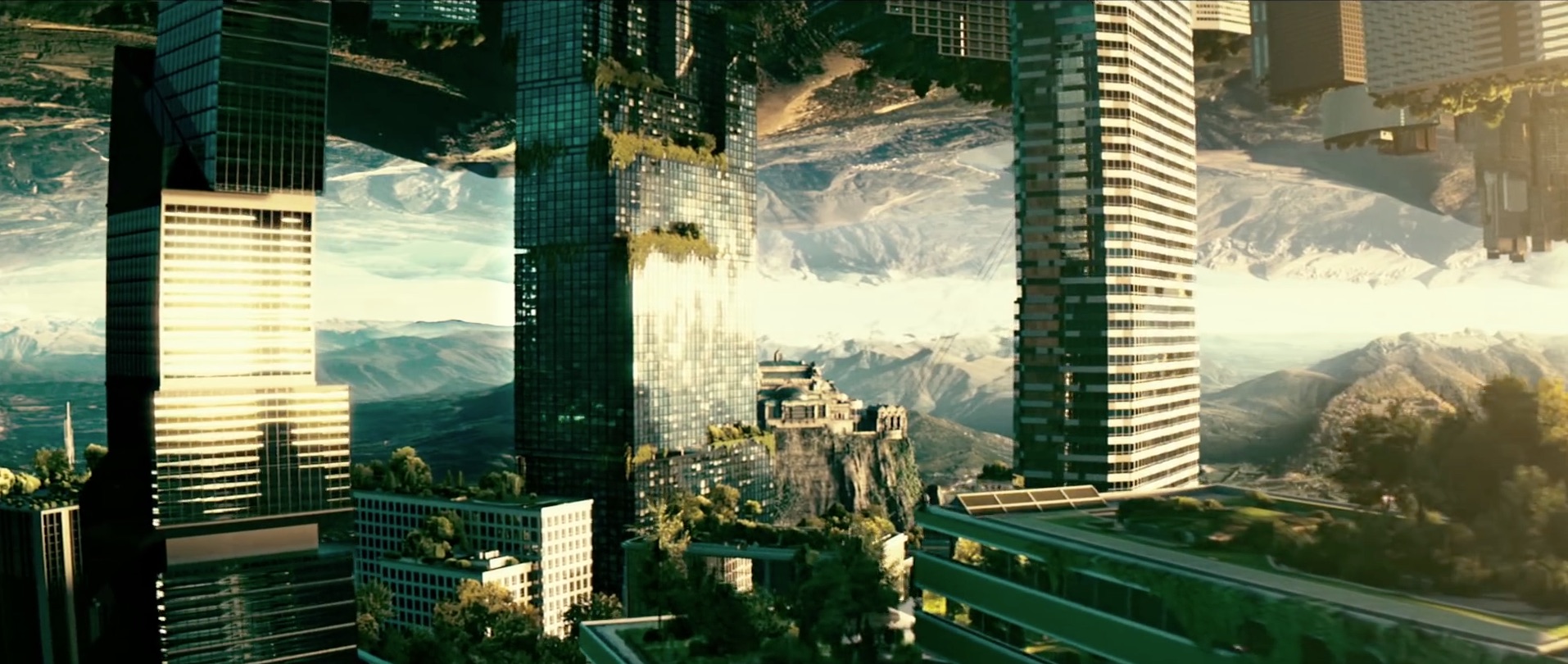More than a dozen years ago I co-founded a non-profit dedicated to place-based learning, especially within metropolitan districts. It was a time when bandwidth for connecting to the internet was still not very high for wired services and mobile connections through cellular networks had even lower connectivity rates and were very expensive.
I was an early advocate for for wireless area networks (WANs) and city-wide WiFi networks. In organizing the non-profit I thought about how it could help connect people and bring them together, much like early populations gathered around streams, rivers and lakes, since fresh water has always been a common connecting element for communities.
In my readings I ran across a quote by scientist and geographer John Wesley Powell, saying that a watershed is …“that area of land, a bounded hydrologic system, within which all living things are inextricably linked by their common water course and where, as humans settled, simple logic demanded that they become part of a community.” That definition seemed equally appropriate for this new inextricable link through wireless technology, so the non-profit was named “Digital Watershed”.
It has not escaped my attention that a watershed with its common water courses is completely determined by two factors: topography and gravity. Gravity compels the water to flow downhill and over time gullies become valleys which further accelerates the transformation of topography. In that process rivulets and creeks graduate to streams and mighty rivers bringing with them arable soils that sustain agriculture, hydro power for industry and the establishment of communities in the form of villages, towns and cities. A single source of gravity (the earth) thus influences where communities form. Competing sources of gravity (the sun and moon) provide opportunities to harvest food, salt and other resources from the oceans through the rise and fall of tides.
This website explores design to guide the development of gravity-like field technology and its influence upon products, people and places. Most of my writings have addressed terrestrial applications in contrast to applications for its use to propel us to the planets and stars. So it seems appropriate to talk about communities that come together based upon another inextricable link – this time to gravity; not from the earth, moon or sun but from the generation of gravity-like fields.
A research park focused upon developing gravity technologies might be one reason to bring people together who have expertise in physics, engineering and advancing new technologies. Its antecedents include Silicon Valley south of San Francisco, and Medical Alley, south of Minneapolis and St. Paul. Such a technology zone of gravity researchers could be a draw for entrepreneurs intent on exploring the possibilities inherent in gravity technology.
Urban districts that employ gravity-tech to structurally augment architecture would be a draw to that district. Architecture soaring with impossible cantilevers, delicate arches and spires reaching even greater heights are referred in my book as “gravitecture +”. These include fantastic architectural edifices that float in the air and integrate with new transportation networks of vehicles for mass transit, individual gravityships and gravity drones. Such a potential could be attained through government/business partnerships modeled after the collaboration of Columbus, Indiana and the Cummins Foundation, which famously incentivized the world’s best architects to create world-class architecture in their city.
A sufficiently advanced gravity-tech might make possible floating homes, businesses and other structures. This is not a unique idea, having found its way into political satire three centuries ago in “Gulliver’s Travels.” In it Jonathan Swift wrote of Laputa, a floating island which Gulliver beheld as, “an island in the air, inhabited by men, who were able (as it should seem) to raise or sink, or put it into progressive motion, as they pleased.” In more modern times, the floating city has been a plot device in television and film, such as Star Trek, Star Wars, and even a Laputa-like city floated to heights (and destroyed) in the action film “Avengers: Age of Ultron”.
I suspect that such floating villages would not be single monolithic entities but more likely aggregations or swarms of structures each with its own unique identity but blended into an eclectic composition of residences, shops, and public areas – much like today’s city.
Any of these outcomes could be described as a “gravityshed”. A watershed is a gravityshed in the natural world, where the water was pulled by gravity to follow the natural topography. I have mentioned in previous writings the drawbacks of floating architecture (violations of right to light, view and issues of residency/taxation) as well as the benefits which include the ability to block or concentrate light where needed or to bring jobs to where the workers are located.
A gravityshed might have multiple gravitational “wells”, not the single one we experience on the earth. If the Extended Heim Theory about gravity-like fields is correct then the wells may be either repulsive or attractive. This would make possible a space filled with push and pull fields. If we think of each well as a gravitational potential, either positive (attractive) or negative (repulsive), it is clear that a course steered past these points would not be a straight one. Plotting a course through this space would be similar to plotting a course for a satellite sent to the outer planets using the slingshot effect of gravitational wells it encounters to change direction and velocity.
As residents on the surface of a globe with a firmly established sense of “down” and a horizon, we might conceive of a gravityshed of residences and buildings as merely a floating version of a village. Such an elevated community might exist within a discrete strata or layer a set distance from the ground – similar to the classes of airspace established for aircraft by the FAA. It would be far more challenging to consider that a gravityshed with multiple wells may possess multiple “gravitational horizons” and wells of different strengths and polarity intersecting with earth’s large well.
It brings to mind the science fiction romance “Upside Down” where two planets are locked in a gravitational stalemate and their respective inhabitants work not side-by-side but head-to-toe, each responding to their own gravity well. The trailer for that can be found HERE and a frame from the film is the featured image for this article.
 That film played with just the intersection of two gravitational fields (as well as how gravity works!). Gravity-like fields generating smaller intersecting gravity wells might result in several types unique field types. Those generated fields may be typified by their actions upon gases, atmosphere and materials in terms of traction, suppression, propulsion, etc, but it is the their lines and surfaces of intersection that could provide the most interesting applications. A full exploration would require new tools for simulation, though it could begin by co-opting existing tools such as software for simulating physics in 3D or even simulations of bubble physics
That film played with just the intersection of two gravitational fields (as well as how gravity works!). Gravity-like fields generating smaller intersecting gravity wells might result in several types unique field types. Those generated fields may be typified by their actions upon gases, atmosphere and materials in terms of traction, suppression, propulsion, etc, but it is the their lines and surfaces of intersection that could provide the most interesting applications. A full exploration would require new tools for simulation, though it could begin by co-opting existing tools such as software for simulating physics in 3D or even simulations of bubble physics
We are still in the pre-discovery days of generating gravity-like fields let alone artificially produced gravitysheds. However, experiments with spinning superconductors in new configurations could reproduce and amplify the small gravitational effects reported by Martin Tajmar almost a decade ago. As the current Professor and Chair for Space Systems at the Dresden University of Technology’s Institute of Aerospace Engineering, Tajmar is a leading experimentalist in propulsionless propellents including the EM Drive. If sustainable gravity-like fields can be experimentally proven, new methods and new tools will need to be quickly be borrowed or devised to provide support for the works of gravity designers.
